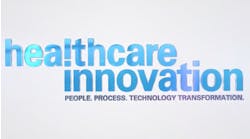Sepsis detection and treatment is taking a big step forward as providers increasingly utilize surveillance and monitoring technology available through electronic medical records (EMR) vendors and third-party providers, according to a new report by KLAS Research.
Of 95 providers interviewed who are employing sepsis solutions, 69 percent reported improved outcomes—with up to a 50 percent drop in mortality, while 23 percent said it was too early in deployment of the technology to have reportable results, the KLAS researchers wrote. Providers also reported improved outcomes in terms of reduced treatment costs, length of stay and readmissions.
Up to half of hospital deaths are due to sepsis, according to research published in The Journal of the American Medical Association (JAMA), KLAS analyst Kody Hansen, who co-authored the report with KLAS analyst Jon Christensen, said in an official statement.
Hansen also sees the advancement of sepsis technology as representing a broader evolution of health IT. “In essence, the clinical decision support (CDS) market is transitioning from passive point solutions to active intelligence—making data valuable and actionable at the point of care,” Hansen said. “A few new vendor solution areas are coming to fruition according our analysis, including what we deem Clinical Process Improvement (aimed at reducing care variation and promoting compliance) and Enterprise Clinical Surveillance (focused on overall patient status, including deterioration and multi-factorial condition analyses).”
Further, Hansen said KLAS’s analysis found that sepsis served as a microcosm of how HIT is beginning to truly effect the triple aim of healthcare delivery. “KLAS is committed to reporting on how vendors are demonstrating ROI, clinical outcomes, and cost reduction related to sepsis and CDS in general. In regard to sepsis, our data—and numerous scholarly publications in the industry—indicate that vendor solutions in general are making a difference today, no question.”
According to the report, adoption of Cerner’s and Epic’s sepsis technology is higher than all other sepsis solutions combined, with customers of both reporting improved outcomes, including mortality reductions. The report quotes an IT director as saying, “We have been using (the Cerner sepsis) product for seven months with excellent results.” “The protocols and criteria are very inclusive and thorough. Reducing septic shock and sepsis is very beneficial to us and our patients. The solution has reduced length-of-stay numbers, mortality, and readmissions,” the IT director also stated. While Cerner’s sepsis solution is easily deployed, Epic users report the need for significant in-house effort for implementation and integration into workflows. Use of sepsis solutions by other EMR vendors lags, though MEDITECH recently developed a solution for sepsis, the KLAS researchers wrote.
Because most EMR vendors lack easily deployed sepsis solutions, some providers are looking to other sources, the researchers found in their analysis. Infection control and surveillance vendors such as Wolters Kluwer and VigiLanz are perceived as most focused. “(Wolters Kluwer’s) POC Advisor pulls data out of our EHR to an engine with all of these rules and then shoots alerts to mobile devices,” the research report quoted one CMIO. And, the CMIO further said, “We are giving needed information to providers at the point of care no matter where they are. We get more of a real-time perspective verses the retrospective chart reviews that we would get three to six months later.”
KLAS researchers also found that Health Catalyst and LogicStream Health leverage their analytics to provide retrospective views of clinical effectiveness and spur effective end-user change management.
KLAS interviewed 102 providers who have not adopted sepsis solutions, finding that 53 percent are considering an EMR module or in-house development using the EMR platform, 19 percent are considering a third-party solution, and 28 percent are not considering solutions.
And, KLAS researchers found that while many of these providers are approaching sepsis detection and treatment through established protocols and reporting, one VP of Quality, who was quoted in the report, said, “Deciding to do something about sepsis needs to be a hospital’s or health system’s first step prior to thinking about what tools to use.”


